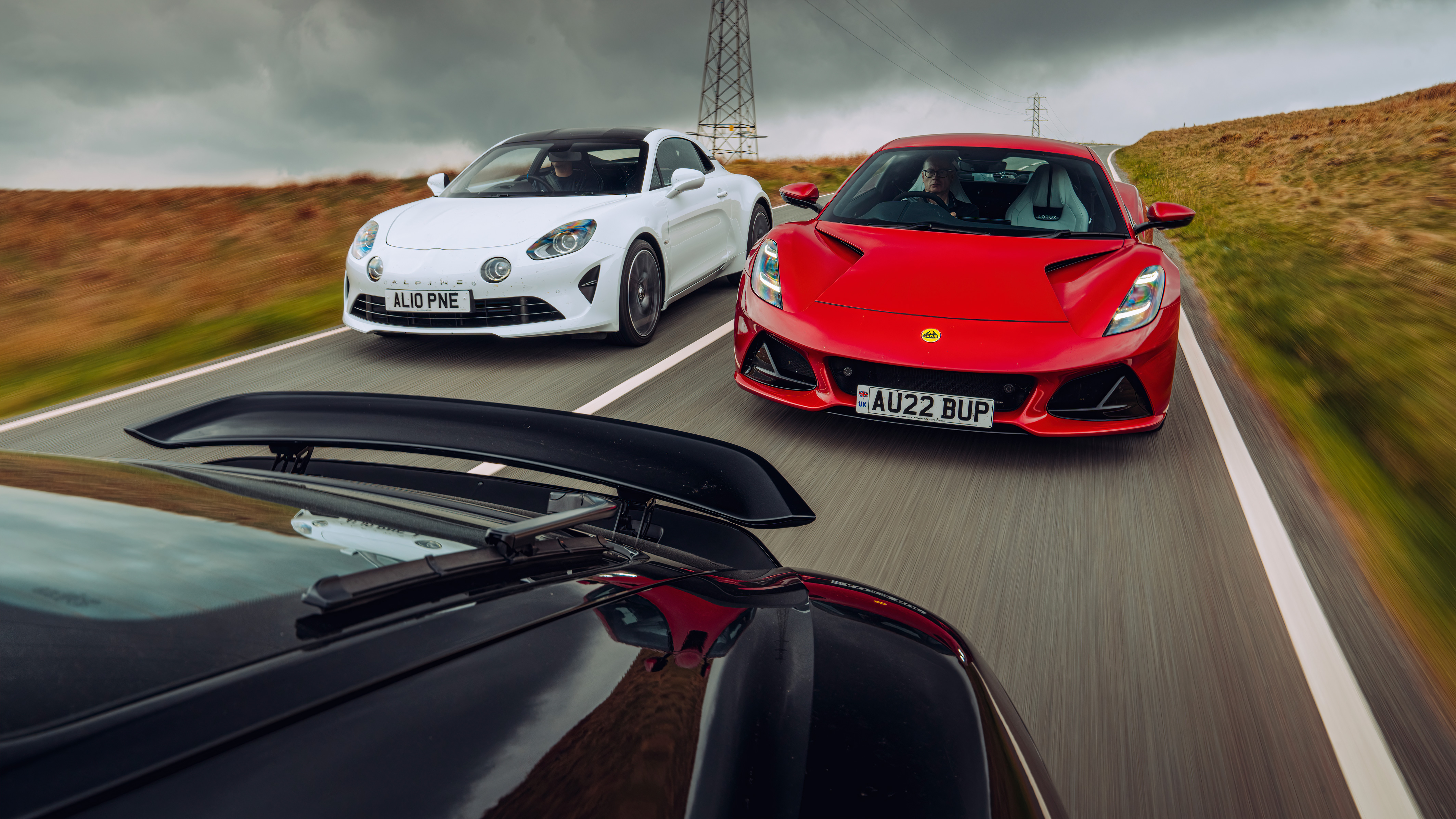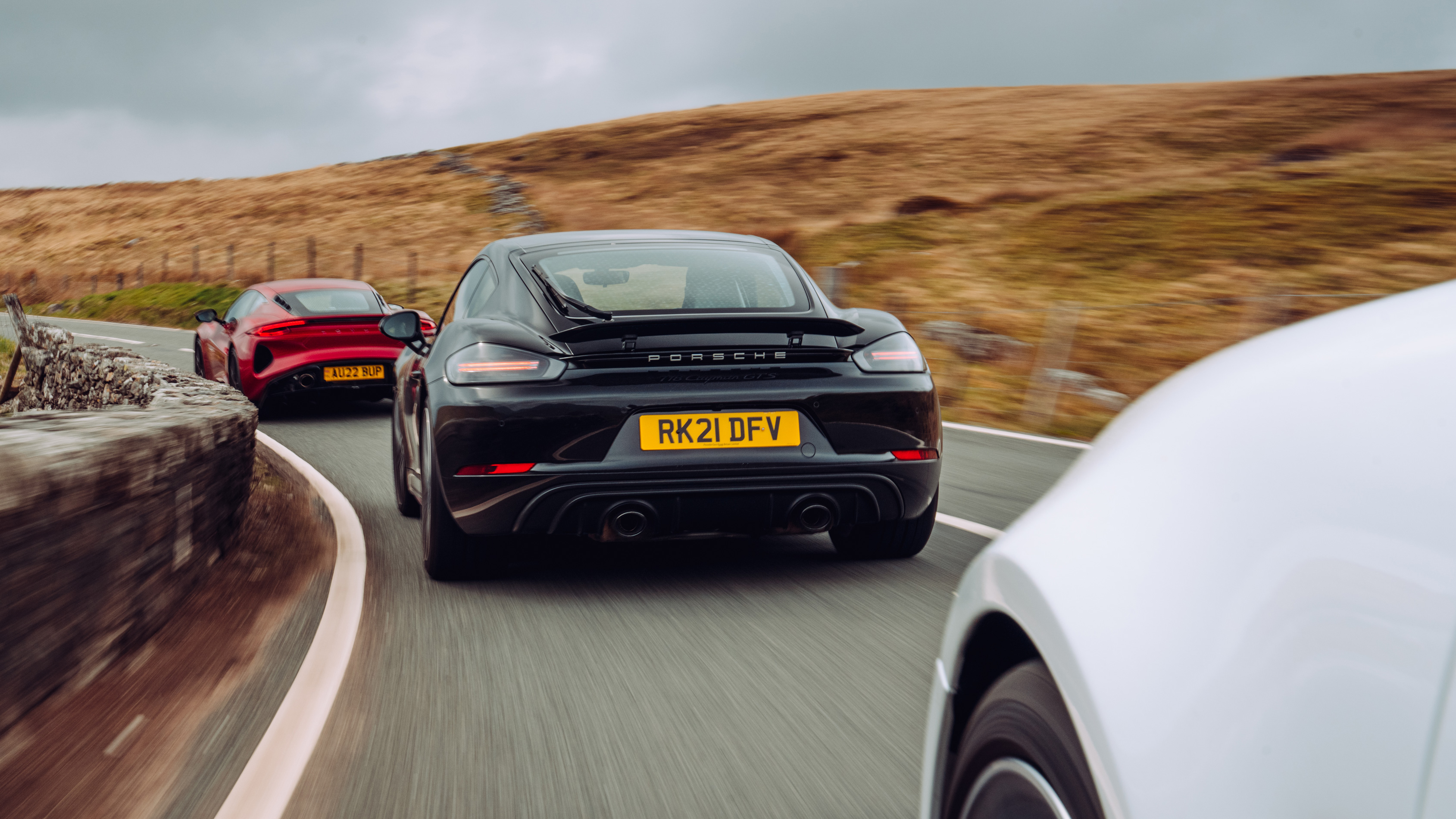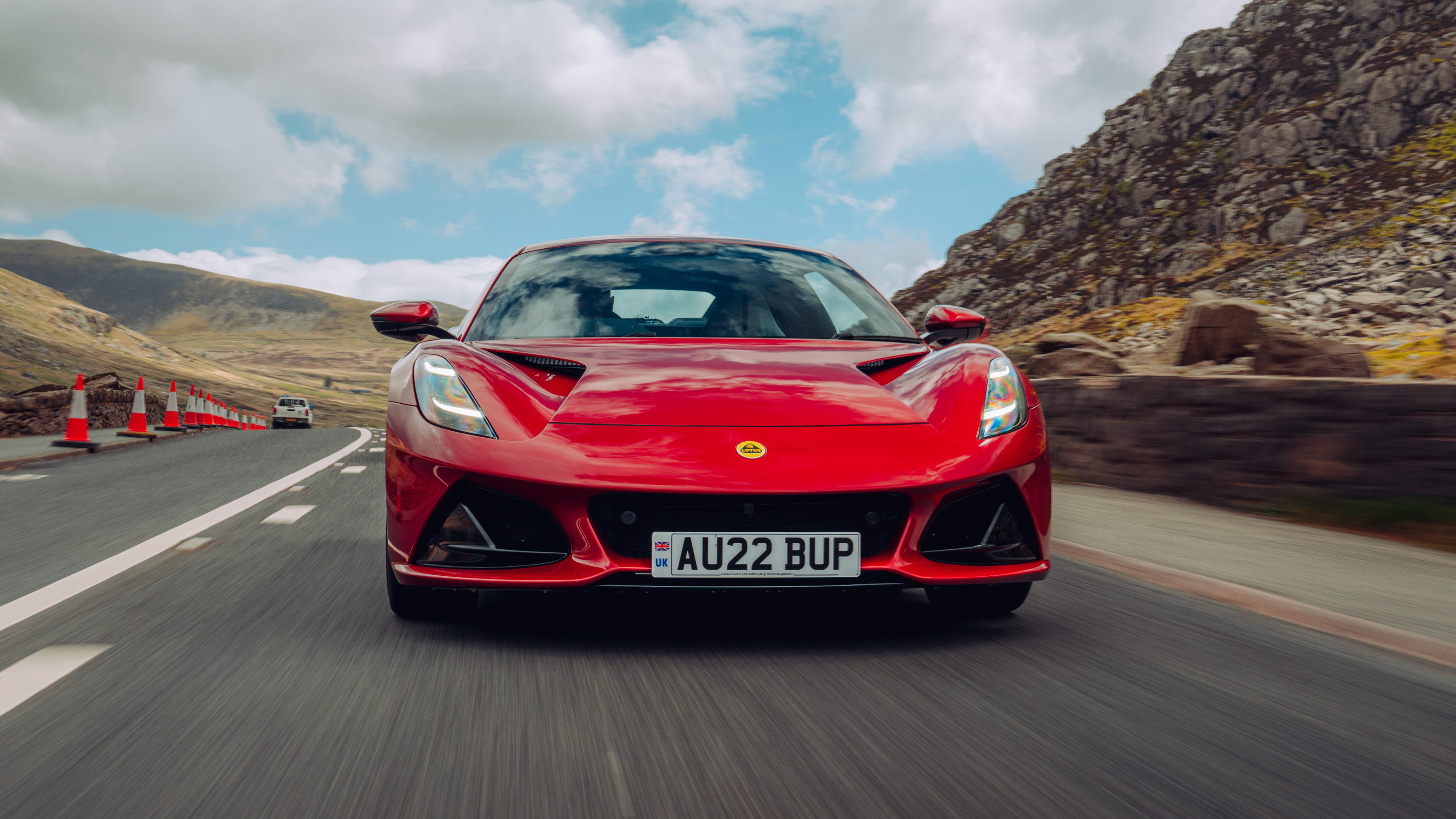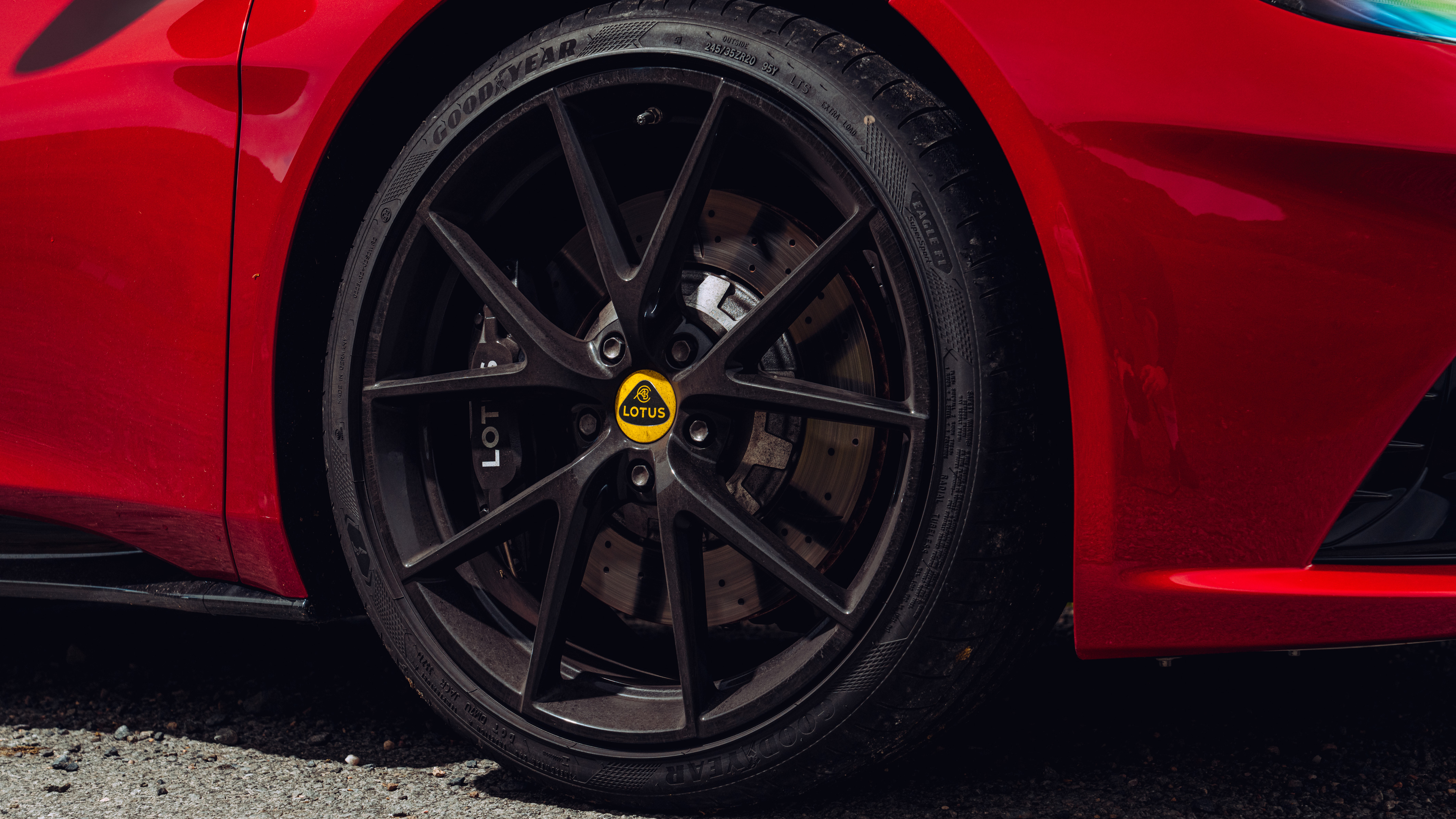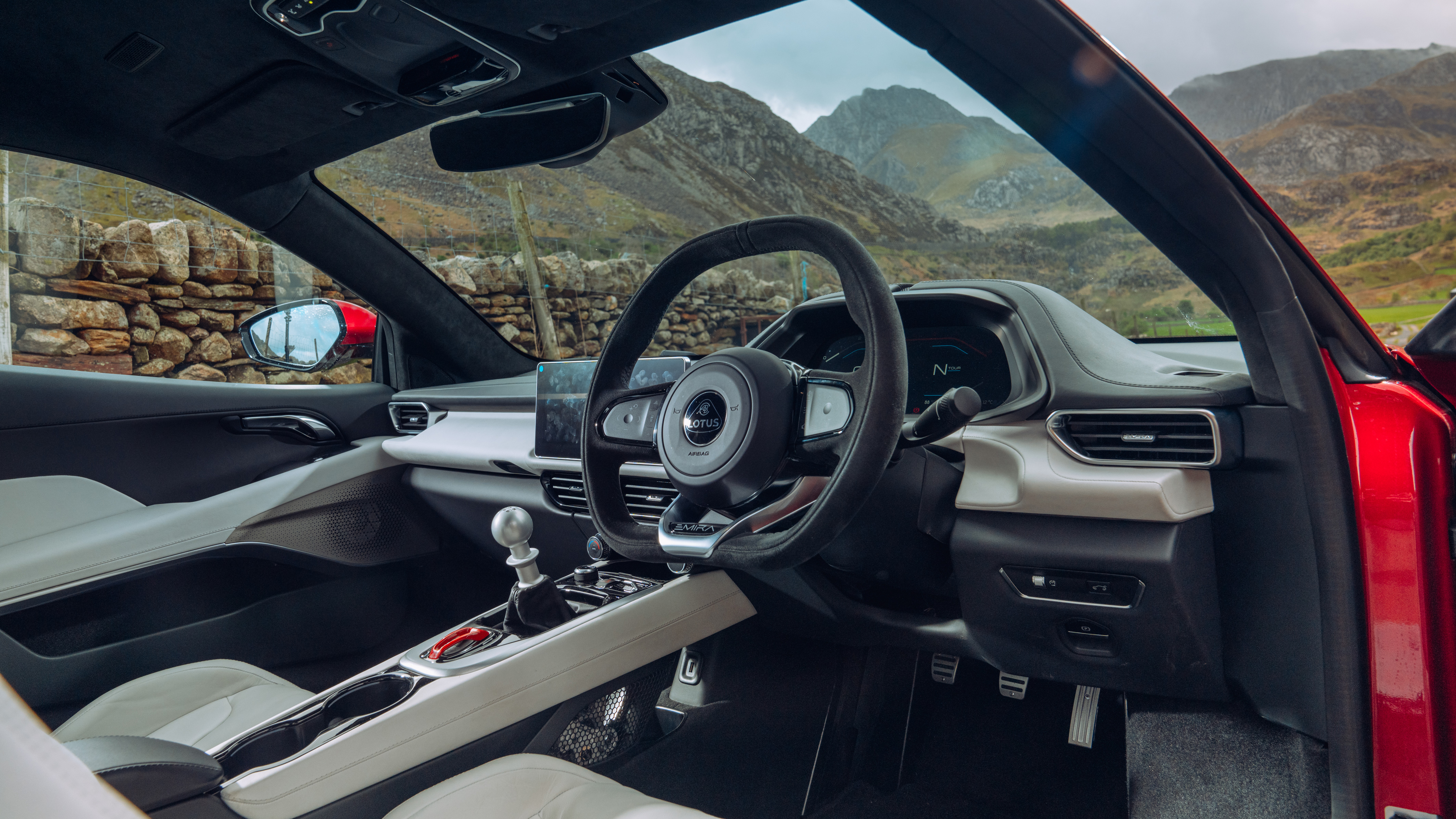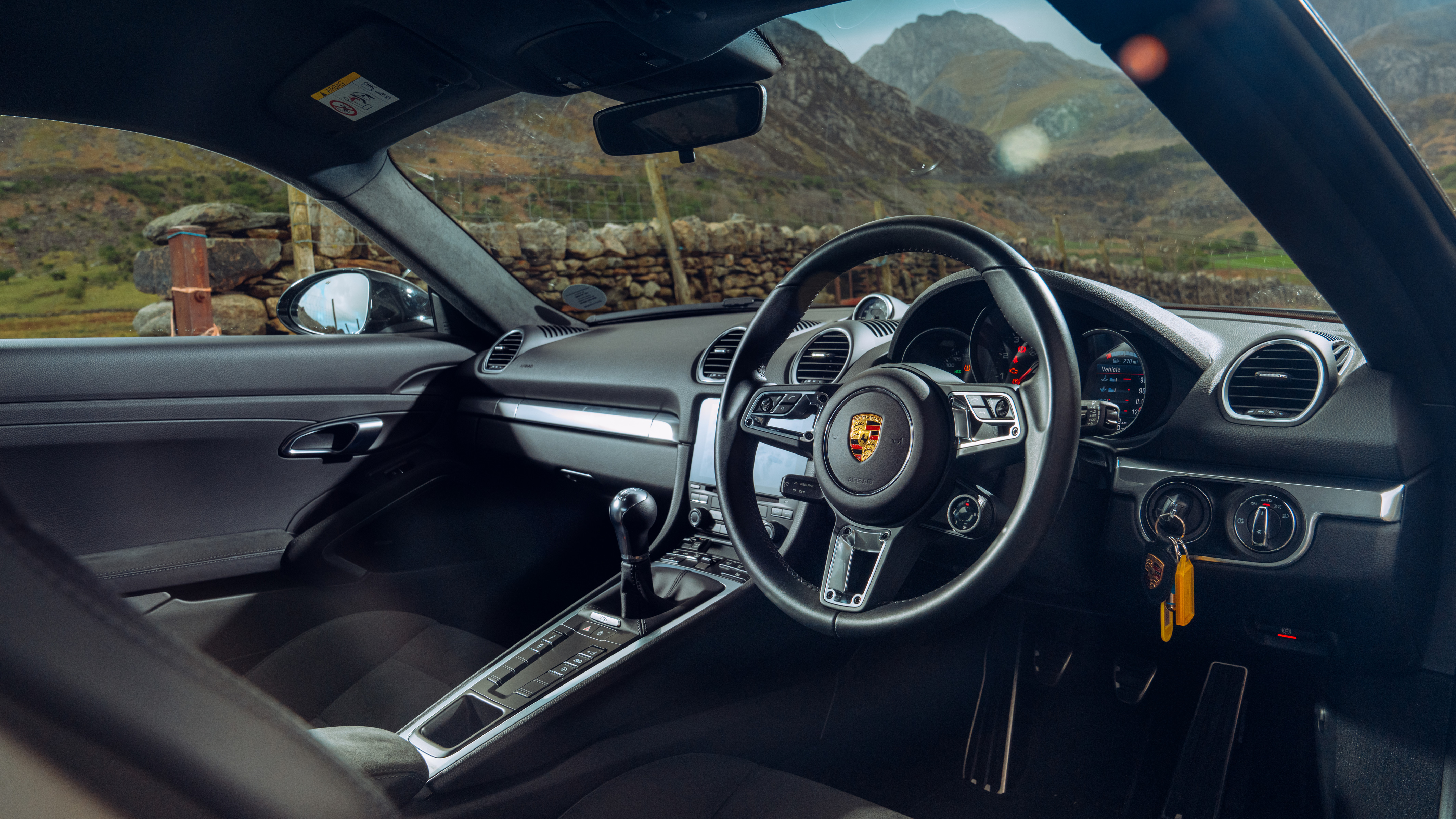
The big sportscar test: Lotus Emira vs Porsche Cayman vs Alpine A110
The Lotus Emira has landed, but how does it stack up against its main rivals? TG sets the satnav for Wales…
Don't think we don't know it: you always start by jumping to the final paragraphs for a verdict. So – spoiler alert! – I don't feel bad about opening this test with the main thing we discovered. There are no losers here.
I could have, like Boris's referendum column, written this feature three times with three different winners, then randomly sent one version to be published. Reader, they're all great. It gives us abundant joy that our favourite kind of car, the ground-up sportster, is in such rude health in the face of an onslaught of over-powered crossovers and four-wheel-drive turbosaloons.
Lotus's product planning seems to have all the foresight of a person who gets drunk then visits a tattooist. Why introduce an all-new pure-combustion car when there remain just seven summers until the new sale of these things is more-or-less banned? Still, that's their problem. Our job is just to enjoy it. Buy any one of these cars while you can.
Words: Paul Horrell
Photography: Mark Riccioni
They surely won't depreciate. (That said, I'm pretty relaxed about their electric successors. At Porsche the Mission R shows the way, and it's not like the Taycan is dull to drive. Meanwhile Lotus and Alpine are getting together to develop their electric sports-car generation, and this test definitely shows they have the smarts to run with it.)
While a lighter DCT four-cylinder Lotus comes next year and might be the better Emira for track work, this First Edition has a bold 3.5-litre supercharged V6 that's perfect for our trip to the best roads in mid and North Wales. Hmmm: aluminium structure, 400bhp, manual transmission. This is a car of the magnitude of a Ferrari 360 Modena. Supercars have moved on since then, but there's no doubt the exterior design and cabin architecture of the Emira are the most successfully exotic of our three cars today. Besides, the 360 never felt sluggish to me, not out on real roads.
Mind you, £76,000 shows the scale of Lotus's ambition, at least in this First Edition spec. Later V6s start from £59,995. Up against it the Cayman GTS has an unblown four-litre flat-six that also makes 400bhp. Here it's specced with a six-speed manual, and a starting price of £65,390. Viewed like that, you can see the Emira is pitched against the Cayman GTS and not against a base 911 Carrera which opens at £90k-odd. Reason we mention all these numbers is that the Alpine lives in different stratum. It starts at under £50,000 and just 250bhp. This test isn't quite apples-to-apples so bear it in mind throughout.
The Emira makes people gawp, in a good way. Just look at its side-contour modelling, its stance, the innovative air ducting through its body. Its authors talk of design that's fit for purpose, and here the purposes are twofold: high performance and high visual drama. It's quite wide, adding to both grip and style, but stops just short of the point where it's cumbersome in narrow roads. And its engine sits proudly visible in its vitrine.
If you want to pass by with less fuss, the Porsche is your car. It's a very good-looking thing, all its surfaces and lines and proportions beautifully resolved. But it doesn't shout. Especially in black on black. The Cayman is well-packaged, well-made and a thoroughly sensible car. But don't stop reading because it's a lot more than sensible too.
The Alpine isn't entirely silly. For a start it does about 10mpg better than the others - better than 40mpg in normal driving with motorways, and it doesn't fall far below 30 when you're enjoying yourself. It's not noisy or uncomfortable. It's a good-looking little car, cheerfully retro if you study old French rally cars, but simply self-supportingly pretty if you don't.
The Alpine isn't entirely silly... It sounds a bit like a hairdryer, mind.
You might imagine the A110's little 1.8-litre turbo four might struggle against the other two mightier sixes. But it has little over 1,100kg to propel while the others here are about 1,400kg, so its 250bhp feels like 320bhp in that context. It sounds a bit like a hairdryer, mind. Now however much you like the idea of a manual, and I do, the Alpine's seven-speed DCT is alert and has well-chosen ratios, again closing the gap on the others. Basically, unless you're on open, fast roads and doing misdemeanour speeds, the Alpine keeps up.
Top Gear
Newsletter
Thank you for subscribing to our newsletter. Look out for your regular round-up of news, reviews and offers in your inbox.
Get all the latest news, reviews and exclusives, direct to your inbox.
The Porsche has a regal engine, able to rev to 7,800 but strong in the mid-revs because of its big capacity. On the way there its mixer desk brings in the rhythmic valvegear, the deep double-three exhaust and then a serious intake wail. We've so missed it as more and more Porsches got their downsized turbo engines.
But you don't get to sample the full spectrum as much as you'd like. Its transmission suffers from the long-time German malaise of a big gap between second and third, and a long final drive. Third could – no, I didn't try – take you well to the far side of 110mph. Thus opportunities to give the engine all the revs are limited. It's a lovely gearshift mind, and the throttle's precision makes downshifts a delight.
The Lotus's engine has sounded better in Evoras and so on, so I expect later accessory exhausts will give it a bit more of the old barrel-chested throb. Being constrained to a 6,800rpm red-line slightly reduces the excitement too, as does a pedal arrangement surprisingly inimical to heel-and-toe downshifts. But those are quibbles. You hear the wail and the V6 exhaust. It's a responsive, urgent and engaging supercharged powertrain.
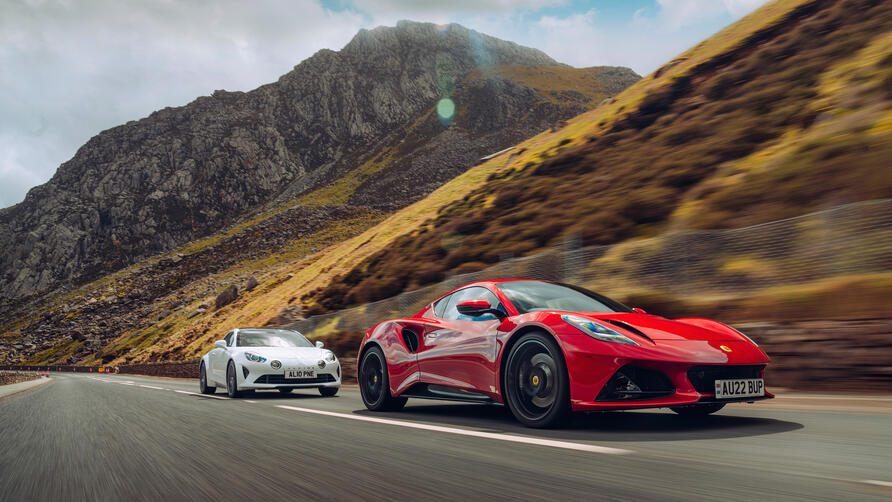
And it's in the right place. All these three proceed down an interesting road in just the way a mid-engined car should. They bounce vertically rather than pitching and rocking, and there's little roll. Their steering is light, and you always sense how little encouragement they need before a course change. You just think them into bends. Your fingers feel the lightness as their noses gently sigh upward as they traverse a crest mid-bend, and they similarly weight-up in dips. You can get early onto the power because there's so much traction. These things are common to all three, but there are differences too.
The Porsche has a steely competence. Porsche makes the best power steering of any mass manufacturer's but its trouble here is it's up against Lotus and Alpine. Compared with them its wheel's gearing and weight are more like a normal car's, albeit precise and biddable. The feel flowing back from the front tyres only happens at really big loading. Mostly the Porsche just copes.
It barely ever gets bothered by anything, unless you're taking a bend at racetrack speed or it's wet. The way it seldom seems to be making an effort is both its triumph and its downfall. It doesn't engage you in the process in the way older, smaller-tyred Caymans did.
All these three proceed down an interesting road in just the way a mid-engined car should
The Lotus has huge grip. Consider the back tyres are 295/30 20, where the Alpine makes do with 235/40 18. And like the Porsche the Lotus mostly just clings on, so it has little cause to communicate too much through the steering about the grip. But the wheel has other things to say. Whereas the Porsche self-centres strongly so it can do a relaxed 170 on the Autobahn, the Lotus has very little self-centring either side of straight ahead, so it sort of flutters in your hands, like an Elise's did, with every little change in camber and surface.
Combined with the micro-precision of the steering as you wind a bit more lock on, this does draw you into the process. Also the Lotus is slightly less bothered by a really bucking back-road than the Porsche. But its ride, like the Porsche's, is quite firm. Lotuses used to be more pliant. It supports its body on the springs and the dampers let it breathe. In this test it's only the Porsche that has adaptive dampers, and they're optional. None of the cars feels like they really need them.
The Alpine's chassis takes a different route, and it's one we found ourselves happy to go down. It grips slightly less forcefully than the others, particularly than the Lotus. But while its steering is as precise as the Lotus's and equally direct, it sits more calmly at the straightahead yet tells you so much more once you ease it into a corner.
Long before you've arrived at its maximum g, the front and back ends are gently squirming and the steering is chatting. And it absolutely does feel like the lightest car, doing its thing with a beguiling economy of input. It's a delirious, captivating level of involvement and it boosts your confidence too. Sure the Lotus would be all over it on a track day, and score big in American road test g-measurements. But we're here to have fun through road corners and we're mainlining on the A110.
So where's the catch? Well, the Alpine is a bit impractical. Mainly because you need to pack light. Its front boot is barely a glovebox at 100 litres, the one behind the engine little bigger, and there's hardly any space behind the seats. Otherwise, no bother. It's a quiet cruiser, with less road noise than the others. I did a load of motorway miles in it and never found its fixed-back seats grated, nor missed the absent driver assist.
Lotus makes a big fuss about the Emira being more daily-useable than its past cars. Sure enough, although there's no front boot, the back one is a decent size, and there's suitcase-sized space behind the seats. The cabin has all the screenerage and connectivity a modern car needs, and it's not just another manufacturer's cast-off. You can get in and out without breaking your spine.
So it's a proper useable car. Yet it does feel supercar-special in here too – low, wide, reclined. A gorgeous exposed gear linkage is mounted below the centre console, but unless you've strapped on a left-knee-cam you won't see it. Probably the biggest issue is the noise – not the engine sound, which is agreeable, but the slightly crude clangs coming through the structural extrusions, and the drumming of those huge tyres. Still, at least there's a good stereo.
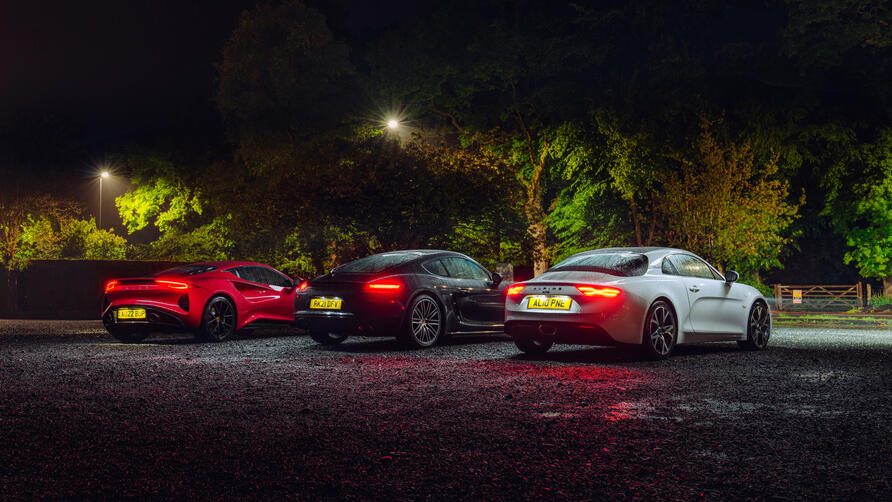
Is the Porsche the one that fits most easily into daily use? Does the sun rise in the morning? It isn't large, yet it has a really deep front boot – its strut suspension is more compact than the others' wishbones – and another space under the hatchback. The cabin is easy to see out of and perfectly well-ordered despite the huge numbers of switches. That dates it, but equally makes you nostalgic for those hardware controls. Everything has a serious solidity to it, yet without overweight excess. As ever since the 356.
Yet the comprehensively engineered Porsche ended up third in my estimation. I should add that others on the test didn't agree, but they didn't disagree vehemently enough. It's well made, but the others aren't badly made. It looks beautiful, but the others look exciting too. It has a magical engine, but it's slightly hobbled by the gearing. Most of all, it is slightly reticent, even on a great road, of fully opening its heart to you.
The Emira does what Lotus set out to do
The Emira does what Lotus set out to do. It gives you driving precision to the last degree, and huge grip and poise, and yet it's practical enough not to put normal people off. It also looks brilliant. Yet I found myself wishing it had slightly less outright grip, and more accessible emotions.
The Alpine, wired into your cortex without punishing your musculoskeletal system, brings every road alive and you with it. You don't even have to bring price into the equation. It's not the fastest or the most dramatic of these three, but it gave us a great time more of the time.
Trending this week
- Car Review
BMW iX3







